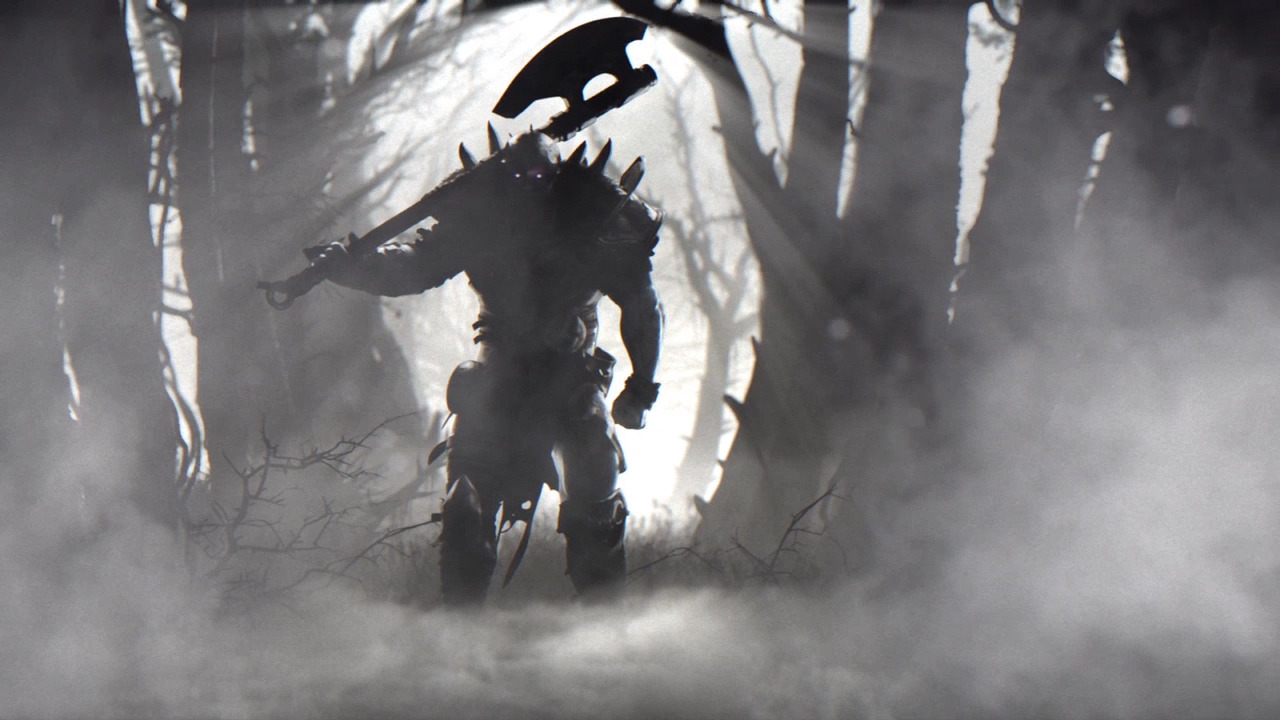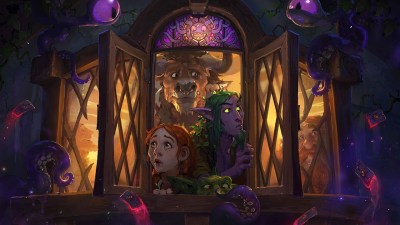Magic: The Gathering: Duels of the Planeswalkers 2015, or Magic 2015 for short, is the latest iteration in Wizards of the Coast’s Duels of the Planeswalkers series, and it is by far the best one yet.
Magic 2015 is the videogame version of Wizards of the Coast’s collectible card game, Magic: The Gathering, based around the 2015 edition cards being released next week. At time of writing, Magic 2015 is only available on the iPad, though there will be PC, Android and Microsoft console versions coming in next week or two. Like the other Magic games before it, Magic 2015 is priced at around $10 on most platforms, with the exception of the iPad, where it is free to play the first of the 5 campaign chapters, after which you have to pay the $10.
The most immediate difference when you start playing Magic 2015 on your iPad - and you should start playing Magic 2015 on your iPad because it is a damn good game - is that this year’s version is far better optimized than last years’ version; this is particularly noticeable on older iPads, so if you’ve been worrying over whether or not your iPad can take the strain, give it a shot, you may be pleasantly surprised. The graphics are stunning (as far as card games go), the game runs smooth as silk, and as for the audio - I’ve had the game idling for the last hour just so I could listen while I work - it’s that nice to listen to.
The biggest difference between Magic 2015 and the previous Duels of the Planeswalkers games, however, is not the optimization. Magic 2015 is a lot closer to the physical card game than Magic 2014 was, as this time the game is entirely focused on deck-building. Where before you were forced to play a particular deck against a particular enemy, with no wiggle room for personalization, in Magic 2015 you are given free rein to play however the hell you like.
For those of you new to the Magic franchise, you are a Planeswalker - a powerful mage who can shift between planes of existence. You battle other Planeswalkers with your magic, with the battles represented by a 60-100 card deck, bursting with creatures, spells and a pool of mana to power these summons. There are 5 colors of magic, or mana, that you can pull from, each representing a different type of magic. Black represents death, and black mages will find themselves summoning zombies, vampires and demons; white represents the holy, with priests, soldiers and even angels heeding your battle cry; red represents fire and aggression, and you’ll be working with demons, goblins and feral beasts; blue represents both illusion magic and water, and you’ll find yourself summoning everything from fish and mermaids to kraken and leviathans; green, our final color, represents nature, with elves, giant snakes, armies of spiders and the like all at your disposal.
After completing the relatively brief 5-mission tutorial, you are asked to pick a color and an archetype (pre-built deck). If you want to be a zombie-wrangling black mage, while also drawing on the power of the white holy magic, that’s entirely cool. You can mix and match as you see fit, and if you don’t like your original choice, you can simply just build yourself a new deck of cards.
This may seem like a lot to take in at first, but there isn’t too much jargon beyond this point beyond characters effects (an enemy with flying can’t be attacked by enemies without it, and an enemy with haste can attack straight away, without needing to wait until the turn after they’re summoned). I picked Magic 2015 up after being a card game enthusiast for about 10 years, but having never really seen the appeal of Magic. I’ve now spent about 25 hours playing Magic 2015 this week, and have just bought 300 physical Magic cards as a result; Magic 2015 is a good starting point for gamers who have never played Magic before, and are curious to see what the fuss is about - especially when you consider that it is free on the iPad. There’s even a dedicated section of the in-game menu which gives you the backgrounds of the characters in the Magic Multiverse if you are at all interested.
That being said, once you finish the tutorial, Magic 2015 really doesn’t hold your hand. This game is difficult. Enemies are ruthless, and if luck isn’t on your side when drawing your cards, you will get trampled. This is why the deck-building mechanic is so important. If you find your tactics aren’t working against one enemy, you can switch your strategies up, throwing deck after deck at the enemy until you find what sticks with your play style. While there is nothing to stop you from going into the in-game store and buying the entire card collection in one fell swoop (it’s one of the microstransactions), it’s entirely possible, much cheaper and a lot more rewarding to play as the developers intended - keep trying until you crush your enemies, and pick up a Booster Pack from their remains.
After each battle you are awarded a Booster Pack of semi-random cards based on the Plane you were fighting on. These Booster Packs never contain basic land cards (the cards making up your mana pool, as the game gives you infinite of each color by default), and never gives you more of one card than you are allowed to put in your deck. You needn’t worry about getting 15 of the same crappy card because that simply won’t happen. While you will only use maybe one or two cards out of each Booster Pack, getting that one card which makes your jaw drop is just as satisfying as watching your collection grow.
The campaign in Magic 2015 is fairly straightforward. You, a Planeswalker, are being hunted by another Planeswalker, Garruk - the evil-looking guy with the purple eyes on the front cover - who has been cursed and has decided that he wants to hunt Planeswalkers. As the multiverse’s greatest tracker and hunter, this is kind of a big deal, and as luck would have it, you’re next on his list. You are told along your journey that you have to either cure or kill Garruk before he kills all of the Planeswalkers - the latter sounds far less plausible than the former. As a result, you spend your time in the campaign battling enemies such as hoards of centurions or zombies, destroying them for their Booster Packs, and occasionally other facing off against the more iconic Planeswalkers as you search for clues on how to cure this powerful enemy who is silently stalking you.
A nice touch which players may not immediately realize in Magic 2015 is that if you repeatedly explore each plane of existence you visit on your journey, there are a few familiar faces you can battle which you otherwise would miss out on. While these simply net you a trophy and another archetype, the gratification you feel in beating the fire-lady from last year’s game is reward enough as it is.
Finally, we have multiplayer. Playing card games like Magic over Skype is perfectly doable, but take it from me, it’s a pain to do. Playing Magic 2015 with a friend over the internet however, is brilliantly easy. You can just as easily play online with random people, using it as an excuse to building your skills and tweak your deck, or just because the main campaign wasn’t difficult enough and you fancy a real test of your skills. What would have been really nice is if Magic 2015 asked if you wanted to be matched against a novice or an expert player in the multiplayer game, but this is nitpicking at this point. The multiplayer is gruelling, but fun all the same.
All in all, Magic 2015 is a game which is well worth your time. There’s the occasional bug where the voices and subtitles don’t quite match up, and the difficulty curve is so intense that it nearly put me off finishing the game - Magic 2015, however, is a game well worth sticking to. It’s just as fun as an entry point to the franchise as it is a bigger, better version of Magic 2014. If you are even remotely interested in collectible card games, it is very hard to go wrong with Magic 2015.


